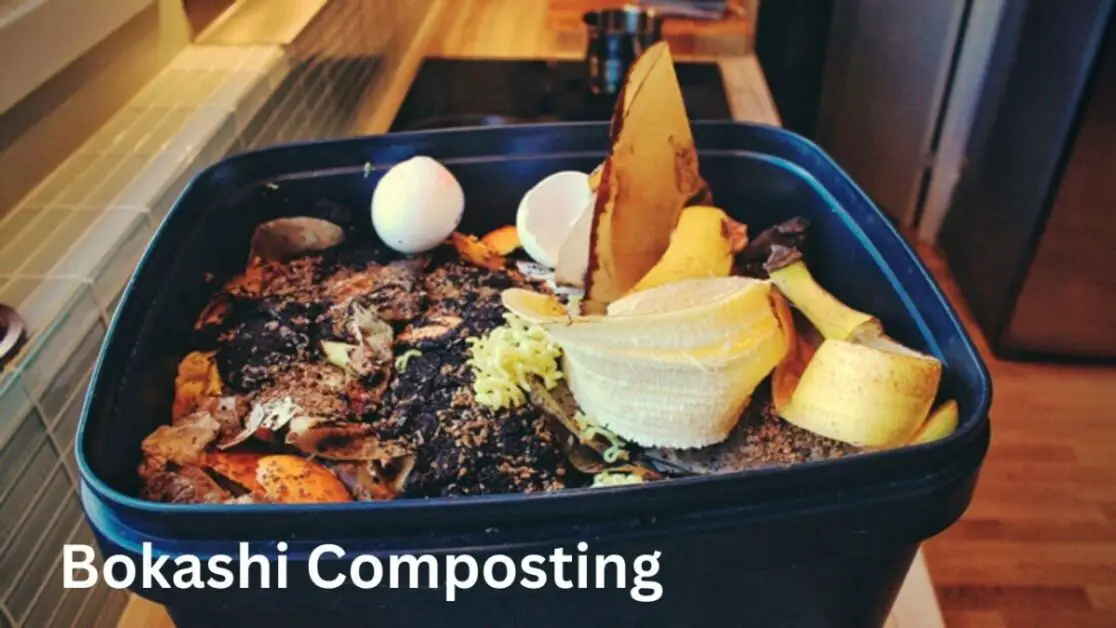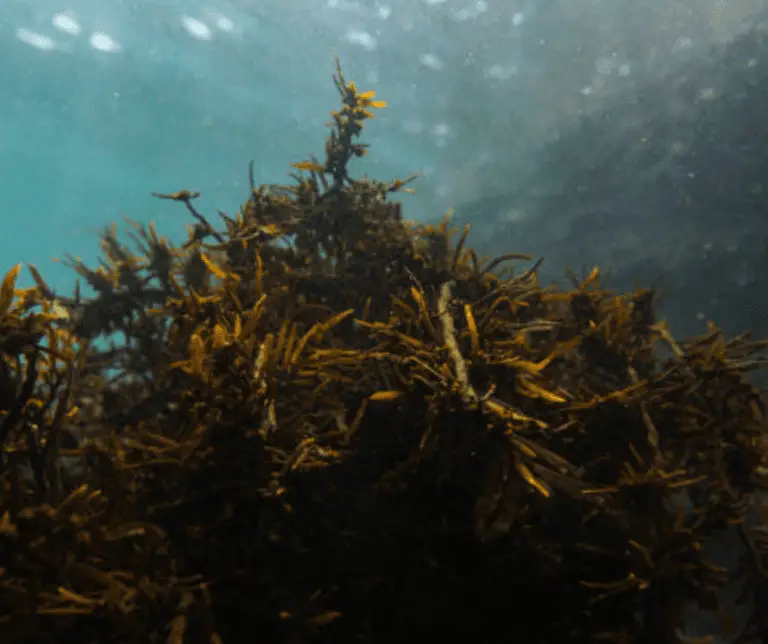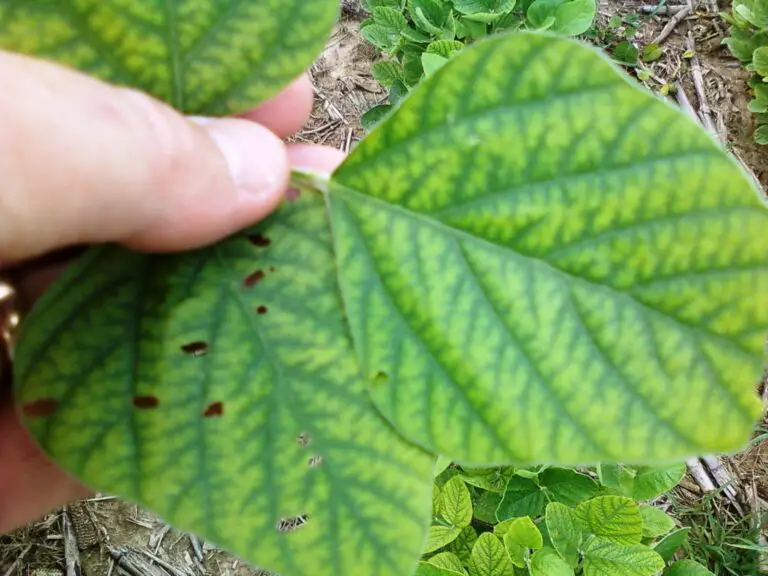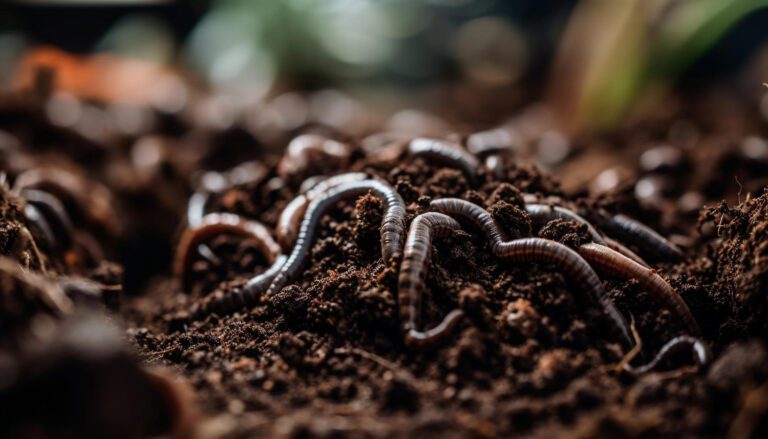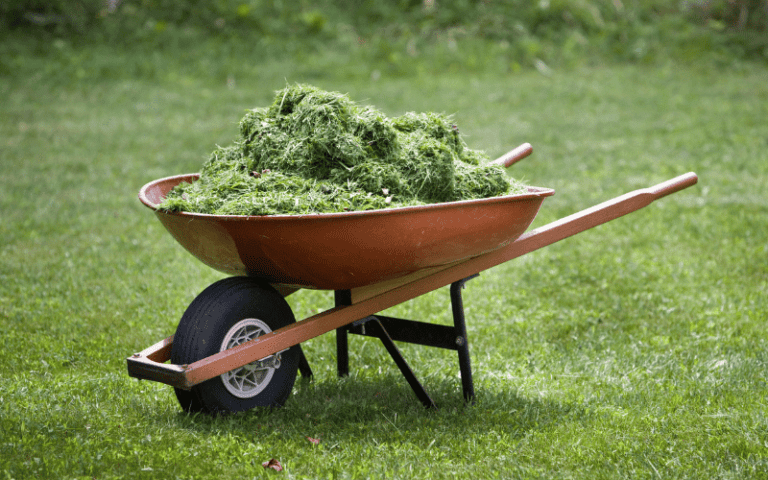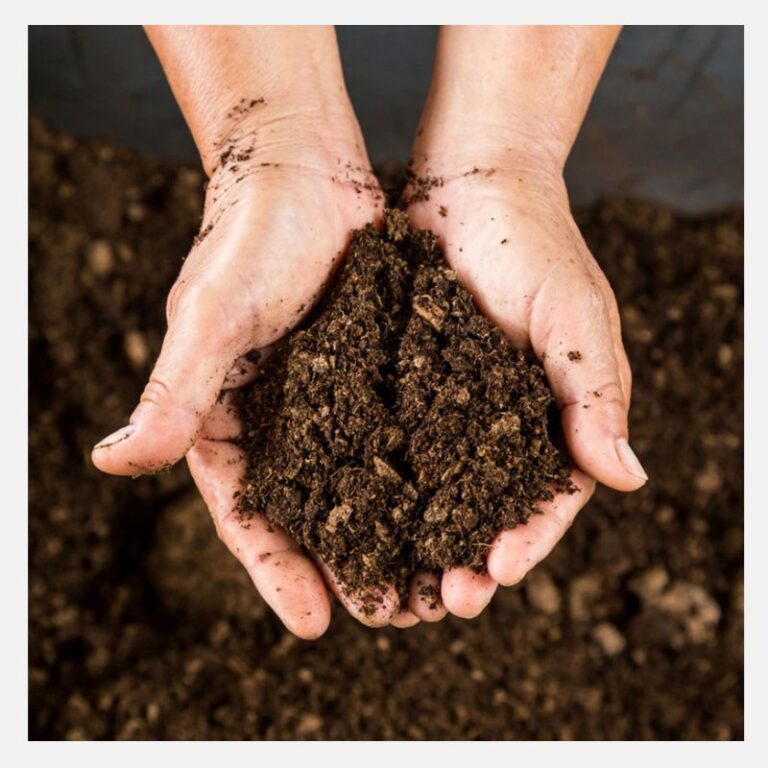Bokashi Composting: A Simple and Effective DIY Solution
Table of Contents
Understanding the Basics of Bokashi Composting
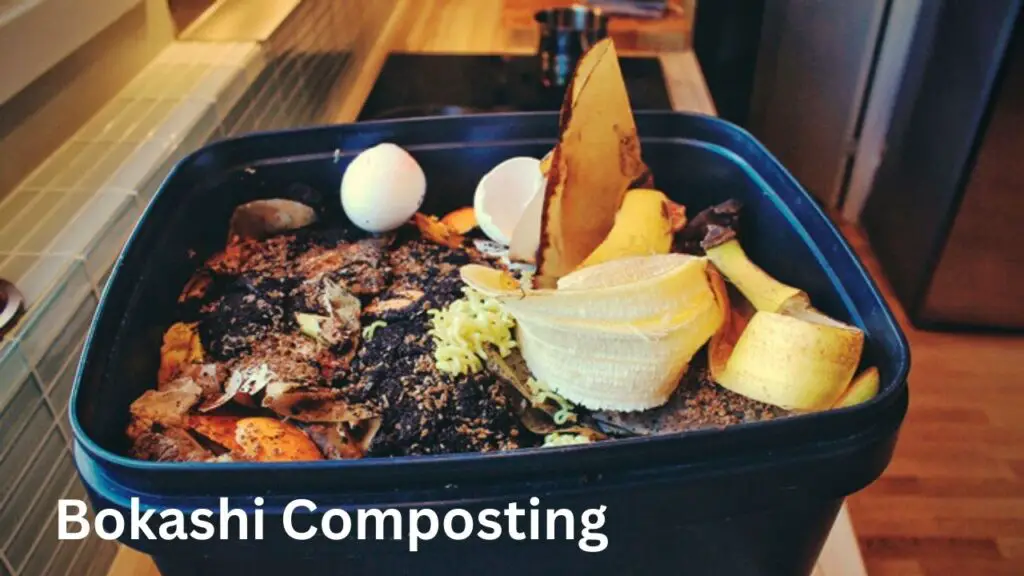
Bokashi composting is a unique and innovative method that has gained popularity among gardening enthusiasts in recent years. Unlike traditional composting methods, which rely on the breakdown of organic materials by bacteria and fungi in the presence of oxygen, Bokashi composting is an anaerobic process. This means that it takes place in the absence of oxygen, making it an ideal solution for those with limited space or living in urban environments.
The term “Bokashi” translates to “fermented organic matter” in Japanese, which accurately describes the process. Bokashi composting involves the use of a special mixture, often consisting of bran or sawdust inoculated with beneficial microorganisms, known as EM (Effective Microorganisms). These microorganisms ferment the organic waste, breaking it down into a nutrient-rich liquid fertilizer and a soil-like material known as Bokashi compost. This compost can then be used to enrich the soil in gardens, potted plants, or even indoor green spaces, providing essential nutrients and promoting healthy growth.
Bokashi composting offers several advantages over traditional composting methods. One of the primary benefits is its efficiency. Because Bokashi composting occurs in an anaerobic environment, it allows for the breakdown of a wider variety of materials, including cooked food, dairy products, and even meat and fish. This means that less waste ends up in landfills, reducing methane emissions and contributing to a more sustainable environment. Additionally, Bokashi composting is a relatively fast process, with the fermentation stage typically taking just a few weeks. This allows gardeners to quickly turn their organic waste into nutrient-rich compost, ready to be used in their gardens or plantings. By embracing Bokashi composting as part of their gardening practices, enthusiasts can reduce waste, improve soil health, and contribute to a greener future.
Benefits of Bokashi Composting for the Environment
Bokashi composting offers a range of environmental benefits that make it a compelling choice for sustainable gardeners. One major advantage is its ability to significantly reduce the amount of organic waste that ends up in landfills. According to the Environmental Protection Agency (EPA), food waste is the single largest component of municipal solid waste in the United States. By diverting this waste from landfills and composting it using the bokashi method, we can minimize methane emissions and reduce the strain on already burdened landfills.
Furthermore, bokashi composting promotes soil health and fertility. The process produces a nutrient-rich compost that is teeming with beneficial microorganisms. When this compost is applied to the soil, it enhances its structure, increases its water-holding capacity, and improves overall nutrient availability. This not only boosts plant growth and productivity but also helps to maintain a healthy ecosystem. Bokashi compost acts as a natural fertilizer, reducing the need for synthetic chemicals and minimizing the risk of water pollution from nutrient runoff. By enriching the soil with organic matter, bokashi composting supports sustainable and regenerative agricultural practices, contributing to a healthier and more ecologically balanced environment.
How Bokashi Composting Differs from Traditional Composting Methods
Bokashi composting is a unique and innovative method that distinguishes itself from traditional composting methods in several key ways. Unlike traditional composting, which relies on aerobic (oxygen-dependent) decomposition, Bokashi composting follows an anaerobic (oxygen-free) approach. This means that the process takes place in an airtight container, creating an environment suitable for anaerobic microorganisms to thrive.
One major difference between Bokashi composting and traditional composting methods is the speed at which the decomposition process occurs. Traditional composting can take several months to a year before the organic waste fully decomposes and turns into nutrient-rich compost. In contrast, Bokashi composting dramatically accelerates the decomposition process, with the material typically breaking down within a matter of weeks. This rapid decomposition is attributed to the use of effective microorganisms (EM) in the Bokashi bran or liquid, which help to facilitate the breakdown of organic matter.
Another significant difference lies in the type of waste that can be composted. While traditional composting methods primarily rely on plant-based materials, such as yard waste and vegetable scraps, Bokashi composting can handle a much broader range of organic waste. This includes not only plant materials but also meat, dairy, and even pet waste. The anaerobic conditions in the Bokashi composting system help to break down these types of waste more effectively, reducing the risk of odors, pests, and pathogens commonly associated with traditional compost piles.
By embracing anaerobic decomposition and offering a more efficient and adaptable approach to composting, Bokashi composting presents an attractive alternative to traditional methods. Its ability to compost a wider range of organic waste quickly and effectively makes it a valuable tool for individuals seeking sustainable waste management solutions. Furthermore, the byproduct of Bokashi composting, known as Bokashi compost, is a powerful and nutrient-rich soil amendment that can improve soil fertility and support healthier plant growth. For those looking to make the most of their organic waste and create a more sustainable gardening practice, Bokashi composting offers an intriguing and practical option.
Exploring the Science Behind Bokashi Composting
Bokashi composting is a fascinating process that utilizes microorganisms to break down organic waste. By understanding the science behind this method, gardeners and composting enthusiasts can maximize its benefits and make informed decisions. Bokashi composting involves the use of a specialized mixture, typically consisting of bran or sawdust, that has been inoculated with effective microorganisms (EMs). These EMs are a combination of beneficial bacteria, yeast, and fungi that work together to ferment and decompose organic matter.
One of the key scientific principles underlying Bokashi composting is anaerobic fermentation. Unlike traditional composting methods that rely on aerobic decomposition, Bokashi composting takes place in the absence of oxygen. This anaerobic environment allows the EMs to flourish and break down the organic waste quickly. During the fermentation process, organic matter is partially broken down into simpler compounds, such as organic acids and alcohol, rather than completely decomposed into carbon dioxide and water. As a result, the final product of Bokashi composting, known as Bokashi bran, retains a higher nutritional value and is rich in beneficial enzymes and microorganisms.
While the exact mechanisms behind the effectiveness of Bokashi composting are still being explored, studies have shown promising results in terms of nutrient retention and microbial activity. Research has indicated that Bokashi compost may contain higher levels of nitrogen, phosphorus, and other essential nutrients compared to traditional compost. Additionally, the presence of beneficial microorganisms can enhance soil health and plant growth. These microorganisms have been found to suppress harmful pathogens, improve soil structure, and contribute to nutrient cycling. Moreover, the anaerobic conditions of Bokashi composting help prevent the release of greenhouse gases, making it an environmentally friendly option for waste management.
Exploring the science behind Bokashi composting not only deepens our understanding of this alternative composting method, but it also highlights the potential benefits it offers. As research continues to unfold, there is a growing body of evidence supporting the efficacy and ecological soundness of Bokashi composting. By harnessing the power of effective microorganisms and promoting anaerobic fermentation, Bokashi composting enables gardeners and environmental enthusiasts to reduce waste, recycle nutrients, and cultivate healthier soils. Understanding the science behind Bokashi composting is key to unlocking its full potential and making informed choices about sustainable waste management practices.
Materials Required for Setting Up a Bokashi Composting System
When setting up a Bokashi composting system, there are several key materials that you will need to ensure effective decomposition of organic waste. Firstly, you will require a Bokashi bin or bucket with a tight-fitting lid. This container is specifically designed to create an anaerobic environment, which is necessary for the fermentation process to occur. It is important to choose a bin made from a durable material, such as high-quality plastic or stainless steel, to prevent any leakage or odor issues.
Next, you will need to purchase a supply of Bokashi bran or accelerator. This is a mixture of beneficial microorganisms, such as lactobacillus bacteria, yeast, and other fermenting agents, that kickstart the breakdown of organic matter. Bokashi bran is sprinkled over each layer of food scraps added to the compost bin. It is readily available from garden centers or online suppliers and comes in either dry or pre-moistened forms.
Additionally, you will require an airtight container or bag to collect your kitchen waste before transferring it to the Bokashi bin. This container should have a tight-sealing lid to prevent any odors or pests, such as fruit flies, from escaping. Many Bokashi enthusiasts use a small, lidded pail or even repurpose an old plastic container for this purpose.
Finally, it is advised to have a compost thermometer on hand to monitor the temperature inside the Bokashi bin. This is beneficial for ensuring that the fermentation process is occurring at the optimal temperature range of 65-85°F (18-30°C). By regularly checking the temperature, you can make adjustments to the bin’s environment if necessary, such as adding more Bokashi bran or adjusting the quantity of food waste added.
By gathering these essential materials, you will be well-equipped to start your Bokashi composting system and begin transforming your food scraps into nutrient-rich soil amendment.
Step-by-Step Guide to Starting Your Bokashi Composting Journey
Starting your journey into bokashi composting is an exciting way to reduce waste and create nutrient-rich soil for your garden. Follow these step-by-step instructions to get started:
1. Choose the right container: Select an airtight container with a lid, such as a bucket or bin, for your bokashi system. Make sure it is large enough to accommodate your kitchen scraps and has a spigot or drain at the base for collecting compost tea.
2. Prepare your bokashi bran: Bokashi bran is a mixture of beneficial microbes that help ferment and break down organic matter. You can purchase ready-made bokashi bran or make your own using bran or sawdust mixed with a bokashi culture starter. Sprinkle a generous amount of bokashi bran on the bottom of your container to create a base layer.
3. Add kitchen scraps: Collect your organic kitchen waste, including fruit and vegetable peels, coffee grounds, tea bags, and eggshells. Chop them into small pieces to speed up the fermentation process. Layer the scraps on top of the bokashi bran in your container, sprinkling more bran between each layer.
4. Seal the container: Press down on the waste to remove excess air and ensure good contact with the bokashi bran. Close the lid tightly to create an airtight environment. This will prevent oxygen from entering the container and promote anaerobic fermentation.
5. Repeat the process: Continue adding layers of kitchen scraps and bokashi bran until your container is full. Each time you add new waste, press it down and sprinkle bokashi bran on top to maintain the anaerobic conditions necessary for fermentation.
Remember to drain the compost tea regularly by opening the spigot or draining the liquid from the base of your container. This nutrient-rich liquid can be diluted and used to feed your plants. In a matter of weeks, the fermentation process will be complete, and you can bury the bokashi compost in your garden or use it as a soil amendment. Stay tuned for the next step in your bokashi composting journey.
Troubleshooting Common Issues in Bokashi Composting
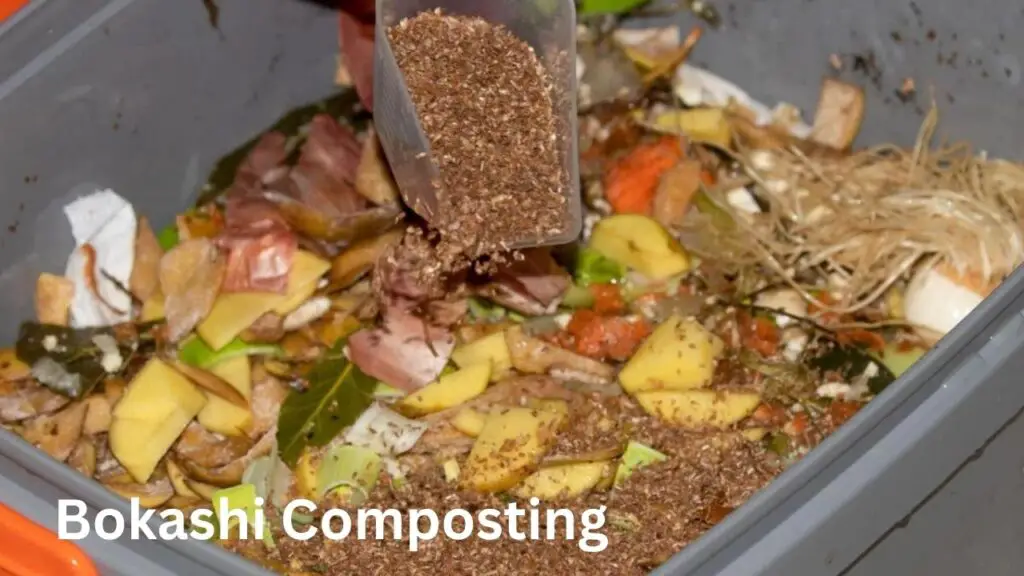
When it comes to bokashi composting, there can be a few common issues that may arise along the way. One such issue is the presence of foul odors emanating from the bokashi bin. This can be a cause of concern for many gardeners, but rest assured, there are simple solutions to tackle this problem. Firstly, ensure that the bokashi bin is tightly sealed to prevent any odor from escaping. If the bin is not airtight, it can lead to the growth of mold or bacteria, resulting in unpleasant smells. Additionally, you can sprinkle a thin layer of bokashi bran on top of the food waste after each addition to help control any odor. Remember to follow the instructions provided with your bokashi bran to ensure you are using the correct amount.
Another issue that gardeners may encounter is a slower fermentation process in the bokashi bin. Ideally, the food waste should break down within two weeks or so, depending on the environmental conditions. However, if you notice that the process is taking longer than expected, there could be a few reasons. Firstly, ensure that the food waste is chopped into smaller pieces before adding it to the bin. This helps to speed up the fermentation process. Secondly, monitor the temperature and moisture levels in the bin. The temperature should be around 20-30°C (68-86°F) and the moisture content should be moist, similar to a wrung-out sponge. Adjustments can be made by adding more bokashi bran or draining any excess liquid if necessary. Lastly, avoid adding large amounts of acidic or oily foods, as they can slow down the fermentation process. By addressing these factors, you can troubleshoot and overcome any potential issues in your bokashi composting journey.
Tips for Maintaining and Managing Your Bokashi Composting System
Maintaining and managing your Bokashi composting system is crucial for ensuring its effectiveness and longevity. Here are some tips to help you keep your system running smoothly:
1. Regularly check the fermentation process: It’s important to monitor the progress of the fermentation process in your Bokashi bin. This can be done by observing the color and smell of the fermented matter. The fermented waste should have a sour smell and turn brown or black in color. If you notice any signs of mold or a foul odor, it may indicate that the fermentation process is not functioning properly. In such cases, you may need to adjust the amount of Bokashi bran or the moisture levels.
2. Maintain proper drainage: Bokashi composting generates a liquid byproduct known as “Bokashi tea.” This nutrient-rich liquid is an excellent fertilizer for your plants. To prevent the Bokashi tea from accumulating and becoming stagnant, ensure that your Bokashi bin has a proper drainage system. You can use a spigot or tap to drain the liquid into a separate container. Remember to dilute the Bokashi tea before using it on your plants, as it can be quite potent and may cause harm if used without dilution.
By following these tips, you can effectively maintain and manage your Bokashi composting system, allowing you to create nutrient-rich soil amendments for your garden while minimizing waste sent to landfills. Happy composting!
Composting with Bokashi: What Can and Cannot Be Composted

When it comes to composting with Bokashi, understanding what can and cannot be composted is key to achieving successful results. Bokashi composting is a unique method that allows for the decomposition of a wide variety of materials, including kitchen scraps, garden waste, and even meat and dairy products. However, there are still some limitations to keep in mind.
Most organic kitchen waste, such as fruit and vegetable peelings, coffee grounds, and eggshells, can be composted using the Bokashi method. In addition, garden clippings, leaves, and small twigs can also be added to the mix. One of the advantages of Bokashi composting is its ability to break down materials that traditional composting methods cannot handle, such as citrus peels, onions, and garlic. This opens up a wider range of organic waste that can be diverted from landfills and transformed into nutrient-rich compost.
However, there are certain materials that should be avoided when composting with Bokashi. These include large woody branches, pet waste, and oily or greasy substances. These items can disrupt the fermentation process and lead to unpleasant odors or undesirable results. It is also important to avoid adding any non-organic or inorganic materials, such as plastics, metals, or synthetic chemicals, as they cannot be effectively broken down and may contaminate the compost. By being mindful of what goes into your Bokashi composting system, you can create a healthy and productive environment for beneficial microorganisms to thrive and transform your waste into valuable compost.
Innovative Uses for Bokashi Compost in Your Garden or Home
Bokashi compost, with its rich nutrient content, can be used in various innovative ways to enhance the health and productivity of your garden or home. One of the most popular uses of bokashi compost is as a soil amendment. When incorporated into the soil, bokashi compost improves its structure, moisture absorption, and nutrient retention capabilities. This leads to better root development, stronger plants, and increased crop yields. Additionally, the beneficial microorganisms present in bokashi compost help suppress harmful pathogens in the soil, promoting a healthier growing environment.
Another innovative use of bokashi compost is in compost tea production. Compost tea, a liquid fertilizer made by steeping compost in water, is a powerful tool for providing nutrients to plants in a readily available form. By adding bokashi compost to your compost tea mix, you can enhance its beneficial microbe content, increasing its effectiveness as a natural plant booster. Compost tea made with bokashi compost can be applied to the leaves and roots of plants, providing a quick nutrient boost and promoting overall plant health.
In conclusion, bokashi compost offers a range of innovative uses for your garden or home. Whether as a soil amendment or as an ingredient in compost tea production, bokashi compost can help improve soil quality, increase plant productivity, and promote a healthier growing environment. Incorporating bokashi compost into your gardening practices can be a sustainable and effective way to maximize the potential of your plants and create a thriving garden space. So why not explore the innovative uses of bokashi compost and experience the benefits for yourself?
Comparing Bokashi Composting with Other Composting Methods
Bokashi composting is a unique composting method that offers several advantages over traditional composting methods. One of the key differences lies in the types of materials that can be composted. Unlike traditional composting, which requires a balanced mix of green and brown materials, Bokashi composting can handle a wider range of organic waste, including cooked food, meat, dairy products, and even citrus peels. This makes it a highly versatile option for individuals who produce a significant amount of food waste.
Additionally, Bokashi composting is known for its speed and efficiency. While traditional composting can take several months to fully decompose, Bokashi composting can significantly speed up the process, often completing the breakdown of organic matter in just a few weeks. This is due to the anaerobic fermentation process that occurs within the Bokashi composting system. As a result, Bokashi composting can be a suitable choice for individuals who require compost more quickly or have limited space for traditional composting setups.
Furthermore, Bokashi composting offers an added benefit of being odor-free. Unlike traditional compost bins that can emit strong odors as organic matter decomposes, Bokashi composting relies on the use of beneficial microorganisms that thrive in an anaerobic environment. These microorganisms effectively suppress the growth of odor-causing bacteria, resulting in a composting process that is virtually odorless. This makes Bokashi composting a suitable option for individuals living in urban areas or those with sensitive noses.
In conclusion
, Bokashi composting offers several advantages over traditional composting methods. These include:
– Versatility: Bokashi composting can handle a wider range of organic waste, including cooked food, meat, dairy products, and citrus peels.
– Speed and efficiency: Bokashi composting can significantly speed up the decomposition process, often completing it in just a few weeks compared to several months with traditional composting.
– Odor-free: The use of beneficial microorganisms in Bokashi composting suppresses the growth of odor-causing bacteria, resulting in a virtually odorless process.
Overall, Bokashi composting is a highly versatile option for individuals who produce a significant amount of food waste and require faster decomposition times or have limited space for traditional compost setups. Additionally, its odor-free nature makes it suitable for those living in urban areas or with sensitive noses.
Success Stories: Real-Life Experiences with Bokashi Composting
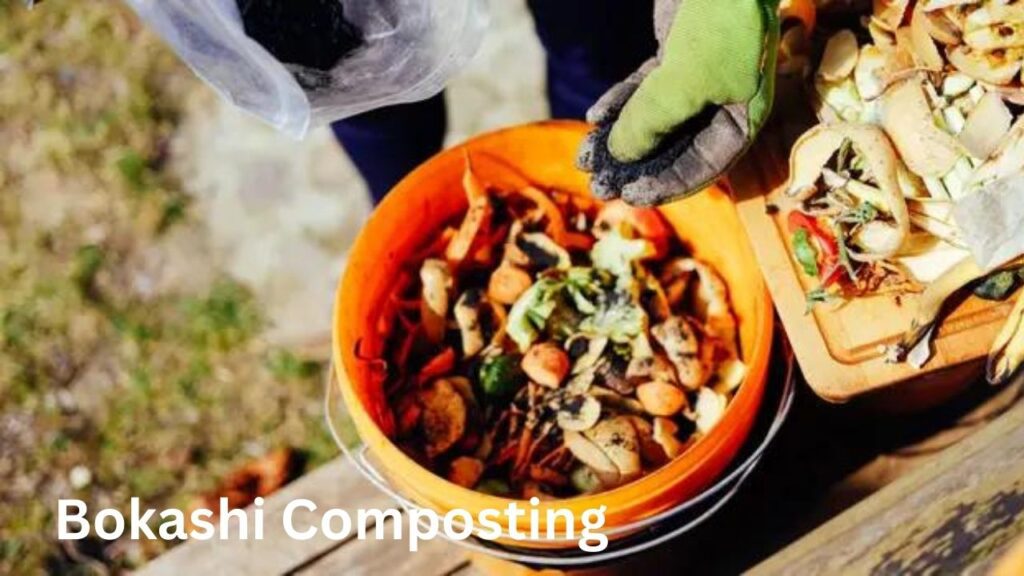
Bokashi composting has gained popularity among gardening enthusiasts for its effectiveness in recycling kitchen waste and its ability to produce nutrient-rich compost. Many individuals have shared their success stories with bokashi composting, highlighting its transformative impact on their gardens and plants.
One gardener, Sarah Johnson, shared her experience with bokashi composting, stating, “I’ve been using the bokashi composting method for over a year now, and I’m amazed at the results. My vegetable garden has thrived like never before, producing abundant and healthy crops. The bokashi compost has improved the soil structure and fertility, resulting in vigorous plant growth and increased yields. Plus, the composting process was so easy to set up and maintain, making it a convenient option for busy gardeners like myself.”
Another success story comes from John Anderson, a hydroponics expert. He mentioned, “I incorporated bokashi composting into my hydroponic system, and the results were incredible. The addition of bokashi compost to my nutrient solution enriched it with essential microorganisms and organic matter, leading to improved plant health and overall system resilience. The bacteria and fungi in the compost worked symbiotically with the hydroponic plants, enhancing nutrient absorption and root development. It’s an innovative approach that has taken my hydroponic gardening to a whole new level.
These success stories are just a glimpse of the numerous positive experiences reported by bokashi composting practitioners. The versatility of this method allows it to be applied across various gardening techniques, making it suitable for both traditional soil-based gardens and modern hydroponic systems. With such promising outcomes, bokashi composting is undoubtedly proving to be a game-changer in the field of sustainable gardening and waste management.
Certainly! Here’s a general table about Bokashi Composting:
| Feature | Description |
|---|---|
| Process | Fermentation of kitchen waste using Bokashi bran and airtight container |
| Materials Accepted | Fruit and vegetable scraps, cooked food, meat, dairy, small bones, and more |
| Materials Not Accepted | Large, tough items like whole fruit or vegetable pieces, excessive liquids |
| Container Type | Airtight container or bucket with a drainage system |
| Microorganisms | Effective Microorganisms (EM) or Bokashi bran |
| Fermentation Time | 2 weeks to 1 month, depending on temperature and waste type |
| End Product | Pre-composted material that needs further processing |
| Odor | Typically has a pickled or fermented odor |
| Space Requirements | Compact and suitable for indoor use |
| Composting Temperature | Room temperature (20-30°C or 68-86°F) is ideal |
| Benefits | Speeds up decomposition, accepts a wider range of kitchen waste, can be done in small spaces |
| Challenges | Requires Bokashi bran purchase, not a final composting solution, may need additional composting step |
| Maintenance | Regular draining of accumulated liquid, adding Bokashi bran when necessary |
| Environmental Impact | Reduces kitchen waste going to landfills, but the final composting step is needed for full environmental benefit |
| Cost | Initial cost for Bokashi bran and airtight container |
| Popular Brands | EM Bokashi, Bokashi Living, All Season Bokashi |
Please note that specific details may vary based on the brand or system used for Bokashi composting. Adjustments can be made based on your specific experience or requirements.
Frequently Encountered Questions about Bokashi Composting
Frequently Encountered Questions about Bokashi Composting:
1. Can I use bokashi compost in my potted plants?
Yes, bokashi compost is highly beneficial for potted plants. The rich nutrients present in the bokashi compost help nourish the plants and improve their overall health. However, it is essential to ensure that you mix the bokashi compost properly with the potting soil before adding it to your plants. This will promote even distribution of the nutrients and prevent any potential harm that could occur from direct contact between the bokashi compost and the plant roots.
2. Can meat and dairy products be composted using the bokashi method?
Contrary to traditional composting methods, the bokashi method allows for the composting of meat and dairy products. This is one of its unique advantages. The bokashi composting system utilizes a specific blend of beneficial microorganisms that can break down and ferment a wide range of organic materials, including meat and dairy. By effectively fermenting these materials, the bokashi composting process eliminates any odors and prevents the growth of harmful bacteria, making it safe to use in the garden. However, it is important to note that large quantities of meat and dairy may take longer to break down, so it is recommended to use them in moderation and in combination with other organic waste materials.
Taking Bokashi Composting to the Next Level: Advanced Techniques and Strategies
Bokashi composting is an effective way to transform kitchen scraps and organic waste into nutrient-rich compost, but there are advanced techniques and strategies that can take your composting journey to the next level. One such technique is vermicomposting, which involves incorporating worms into your Bokashi composting system. The worms help break down the fermented waste even further, resulting in a finer and more nutrient-dense compost.
To incorporate vermicomposting into your Bokashi composting system, you can add a layer of composting worms, such as red wigglers, to the top of your Bokashi bin after each fermentation cycle. The worms will naturally migrate into the fermented waste and start breaking it down. This process not only enhances the decomposition of the waste but also increases the microbial activity in the compost. The end result is a high-quality, nutrient-rich vermicompost that can greatly benefit your plants.
Another advanced technique in Bokashi composting is the use of effective microorganisms (EM). EM is a mix of beneficial microorganisms, such as bacteria, fungi, and yeasts, that help enhance the fermentation process and speed up the decomposition of organic matter. Adding EM to your Bokashi composting system can increase the breakdown of complex organic compounds, resulting in a more potent and effective compost.
To introduce EM into your Bokashi composting system, you can either purchase EM products or make your own EM solution using a combination of fermented plant extracts, molasses, and water. Simply dilute the EM solution with water according to the product instructions or recipe, and then add it to your Bokashi bin along with the food waste. The presence of EM will not only accelerate the fermentation process but also introduce beneficial microbes to the compost, which can improve soil health and plant growth.
By integrating vermicomposting and effective microorganisms into your Bokashi composting system, you can maximize the benefits of this innovative composting method. These advanced techniques can further enhance the breakdown of organic waste, increase the nutrient content of the compost, and promote the growth and vitality of your plants. So, if you’re looking to take your composting journey to the next level, consider exploring these techniques and strategies for a more fruitful and sustainable gardening experience.
Can I use Bokashi compost in my indoor plants?
Yes, Bokashi compost can be used for indoor plants. However, it is important to dilute the Bokashi compost with water before applying it to your indoor plants to prevent any potential burning of the roots.
How long does it take for Bokashi compost to fully decompose?
The time it takes for Bokashi compost to fully decompose depends on various factors such as temperature, moisture levels, and the types of waste being composted. On average, it can take anywhere from two weeks to several months for the Bokashi compost to fully break down.
Can I add meat and dairy products to my Bokashi composting system?
Yes, you can add meat and dairy products to your Bokashi composting system. Bokashi composting is unique in that it can break down a wider range of organic matter, including meat and dairy products, due to the fermentation process. However, it is important to bury the Bokashi compost containing meat and dairy deep in the soil to avoid any potential odor or pest issues.
Is it necessary to use a Bokashi composting bin or can I use any container?
While it is not necessary to use a specific Bokashi composting bin, it is recommended to use a container that is airtight and has a drainage system. This helps to maintain the oxygen-free environment required for the fermentation process and allows for the release of excess liquid.
Can I use Bokashi compost in vermicomposting systems?
Yes, Bokashi compost can be used in vermicomposting systems. However, it is important to introduce the Bokashi compost gradually to the vermicomposting bin, as it may take some time for the worms to adjust to the new material. Monitoring the moisture levels and ensuring proper aeration is maintained is also necessary when combining Bokashi compost and vermicomposting.
Can I use Bokashi compost in my potted plants?
Yes, Bokashi compost can be used in potted plants. However, it is advisable to mix the Bokashi compost with regular potting soil or compost before adding it to the pots. This helps to balance the nutrients and prevent any potential nutrient imbalances in the potted plants.
Can I use Bokashi compost in my compost tea?
Yes, Bokashi compost can be used to make compost tea. Simply add a small amount of Bokashi compost to a bucket of water and let it steep for a few days. The resulting liquid can then be used as a nutrient-rich foliar spray or soil drench for your plants.
Can I use Bokashi compost for seed starting?
Bokashi compost may not be ideal for seed starting as it may contain pathogens that could potentially harm young seedlings. It is recommended to use a sterilized seed starting mix for optimal germination and seedling health.
How can I prevent odors when using a Bokashi composting system?
To prevent odors when using a Bokashi composting system, ensure that the lid of the composting bin is securely closed after each addition of waste. Additionally, regularly draining the excess liquid and burying the fermented waste deep in the soil can help minimize any potential odor issues.
Can I use Bokashi compost in my aquaponics or hydroponics system?
Bokashi compost may not be suitable for use in aquaponics or hydroponics systems as it contains solid waste material that could clog the system. These systems typically rely on liquid nutrient solutions for plant growth.

